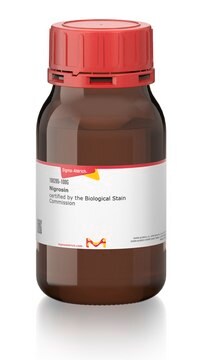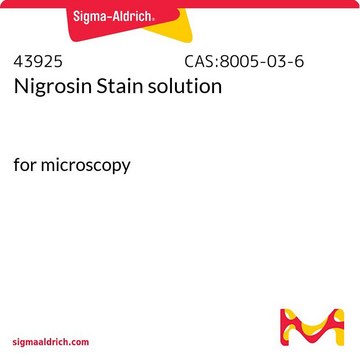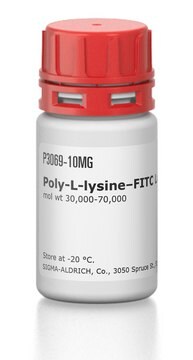Kluczowe dokumenty
P2636
Poly-L-lysine hydrobromide
suitable for cell culture and bioconjugation, Mol wt 30,000-70,000
Synonim(y):
L-Lysine homopolymer hydrobromide
About This Item
Polecane produkty
Nazwa produktu
Poly-L-lysine hydrobromide, mol wt 30,000-70,000
Formularz
powder
Poziom jakości
masa cząsteczkowa
30,000-70,000
metody
bioconjugation: suitable
cell culture | mammalian: suitable
zanieczyszczenia
<10% water (Karl Fischer)
kolor
white to faint yellow
rozpuszczalność
water: 50 mg/mL, clear, colorless to light yellow (50 mg/mL, water, Clear, Colorless to light yellow
)
grupa funkcyjna
amine
carboxylic acid
temp. przechowywania
−20°C
ciąg SMILES
Cl.NCCCCC(N)C(O)=O
InChI
1S/C18H38N6O4/c19-10-4-1-7-13(22)16(25)23-14(8-2-5-11-20)17(26)24-15(18(27)28)9-3-6-12-21/h13-15H,1-12,19-22H2,(H,23,25)(H,24,26)(H,27,28)/t13-,14-,15-/m0/s1
Klucz InChI
WBSCNDJQPKSPII-KKUMJFAQSA-N
Szukasz podobnych produktów? Odwiedź Przewodnik dotyczący porównywania produktów
Opis ogólny
Derived from the naturally occurring amino acid l-lysine, Poly-L-lysine is available in various forms, allowing for customization in terms of molecular weight and shape. As a synthetic positively charged polymer, it exists in two enantiomers, poly-D-lysine and poly-L-lysine, both of which have their unique applications.
In formulation research, Poly-L-lysine proves to be valuable in nucleic acid delivery. Its positive charge, attributed to the ε-amine on its side chain at physiological pH, enables it to condense plasmid DNA effectively based on salt concentration. While Poly-L-lysine appears suitable for gene delivery, unmodified versions have been associated with low transfection efficiency and cytotoxicity.
In conclusion, Poly-L-lysine offers a multifaceted solution in cell culture and formulation research, enhancing cell adhesion, enabling gene delivery, and contributing significantly to advancements in biochemical and cell biology research.
Zastosowanie
Działania biochem./fizjol.
Cechy i korzyści
- Can be used in Metabolomics and Biochemical research
- High-quality compound suitable for multiple research applications
Komponenty
Przestroga
Uwaga dotycząca przygotowania
Komentarz do analizy
Inne uwagi
produkt podobny
Kod klasy składowania
11 - Combustible Solids
Klasa zagrożenia wodnego (WGK)
WGK 3
Temperatura zapłonu (°F)
Not applicable
Temperatura zapłonu (°C)
Not applicable
Środki ochrony indywidualnej
Eyeshields, Gloves, type N95 (US)
Wybierz jedną z najnowszych wersji:
Masz już ten produkt?
Dokumenty związane z niedawno zakupionymi produktami zostały zamieszczone w Bibliotece dokumentów.
Klienci oglądali również te produkty
Produkty
Kanjiro Miyata (The University of Tokyo, Japan) provides insights on the rational design of polymeric materials for “smart” oligonucleotide delivery.
Humankind has utilized protein materials throughout its existence, starting with the use of materials such as wool and silk for warmth and protection from the elements and continuing with the use of recombinant DNA techniques to synthesize proteins with unique and useful properties.
Nasz zespół naukowców ma doświadczenie we wszystkich obszarach badań, w tym w naukach przyrodniczych, materiałoznawstwie, syntezie chemicznej, chromatografii, analityce i wielu innych dziedzinach.
Skontaktuj się z zespołem ds. pomocy technicznej










